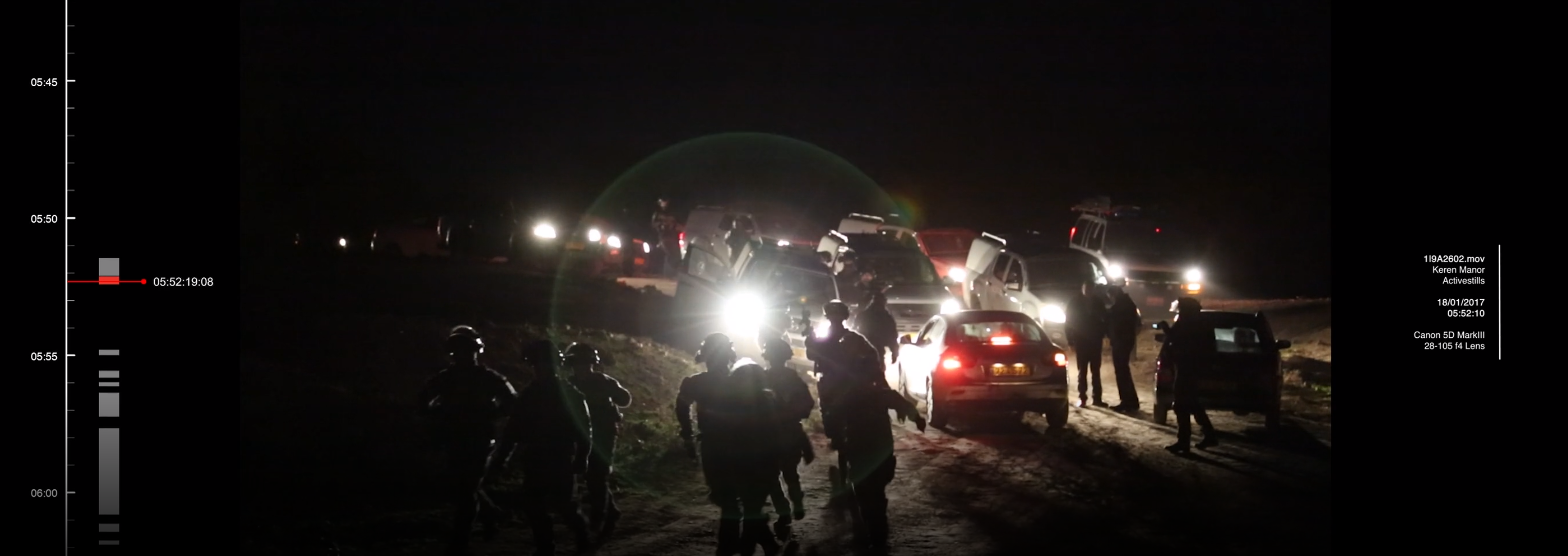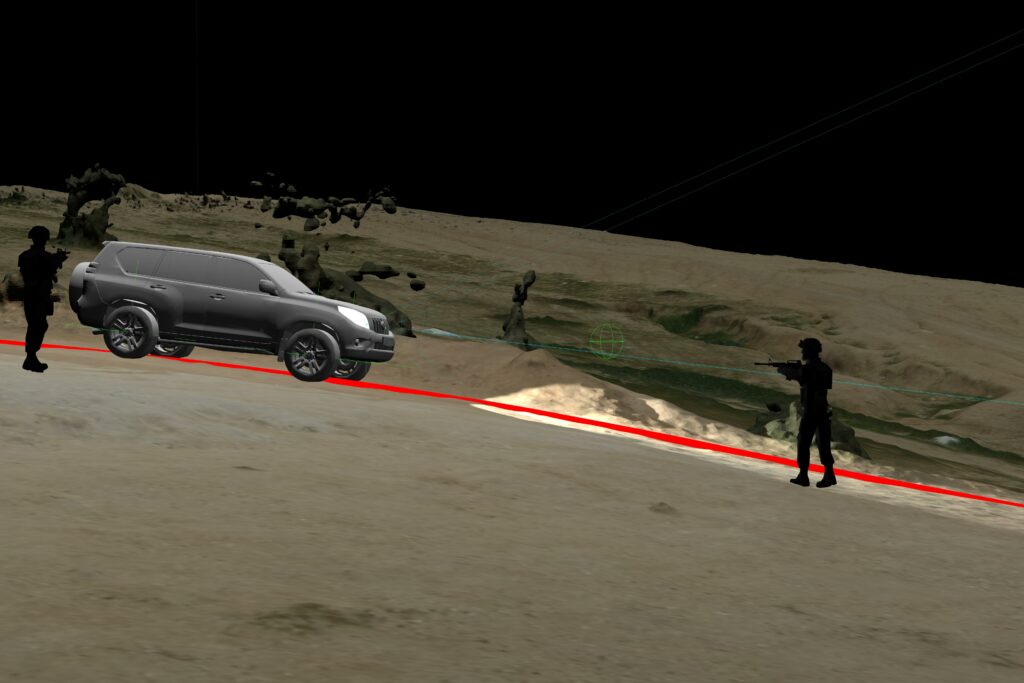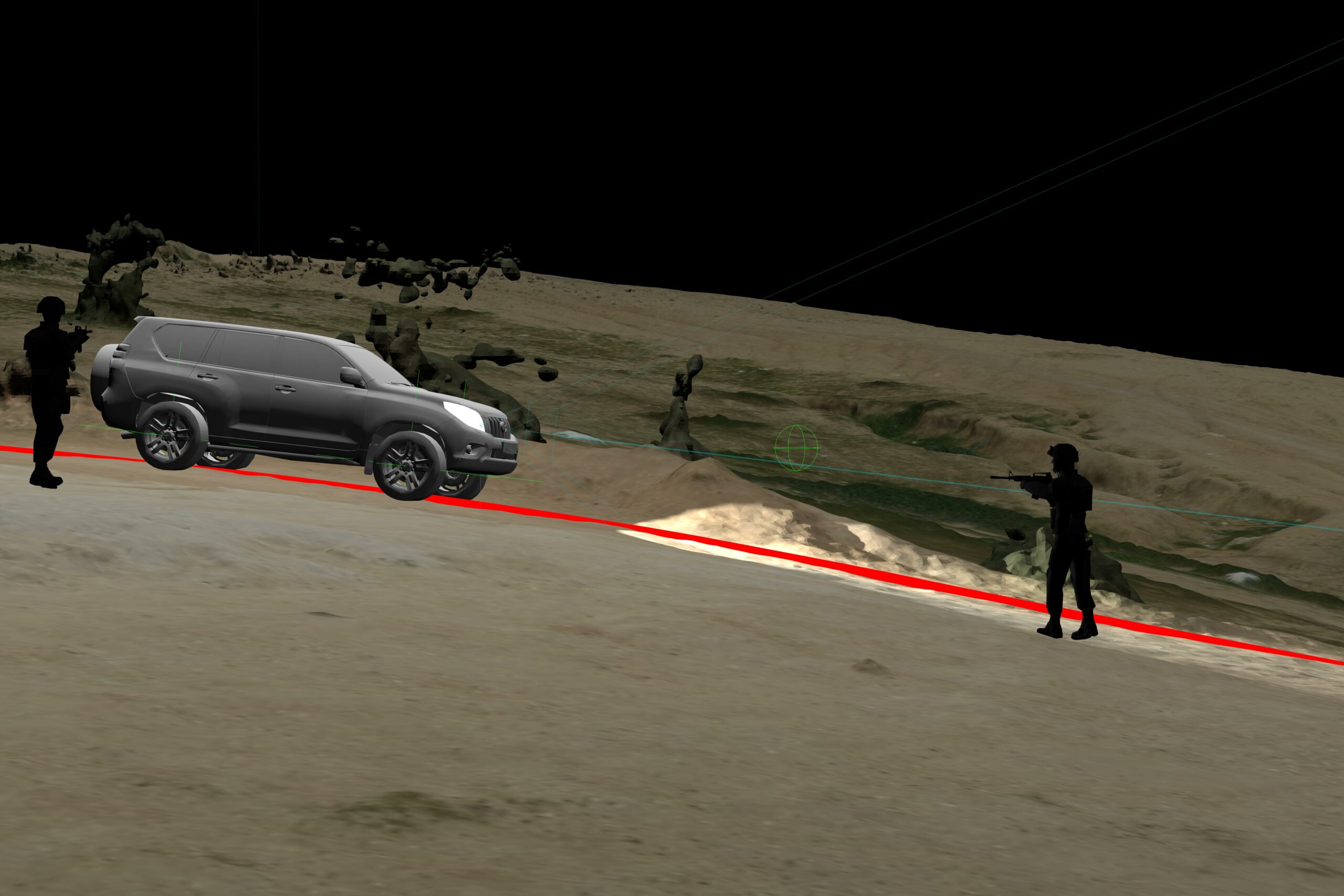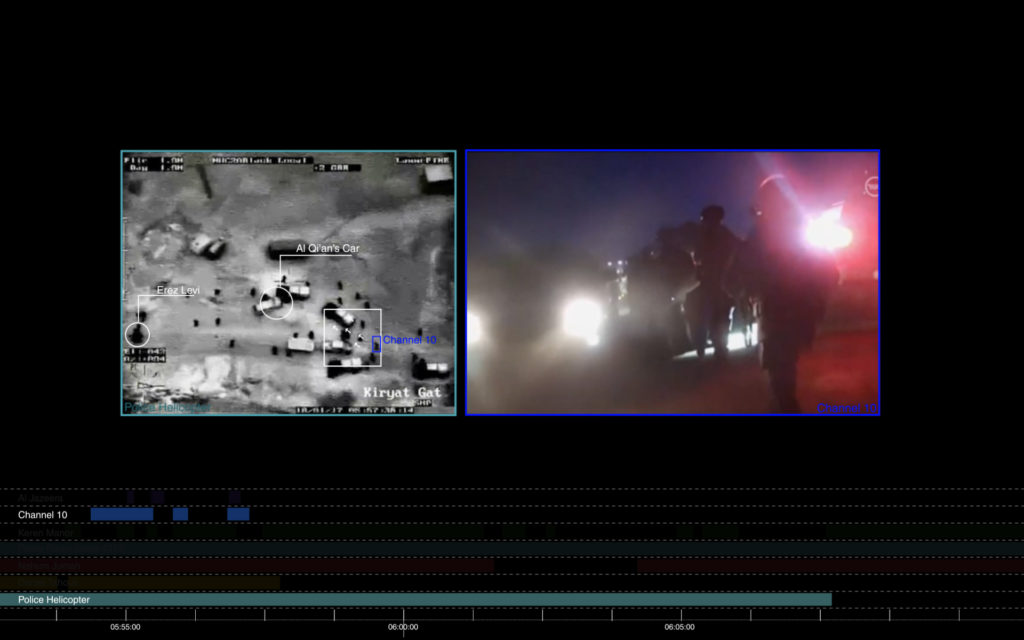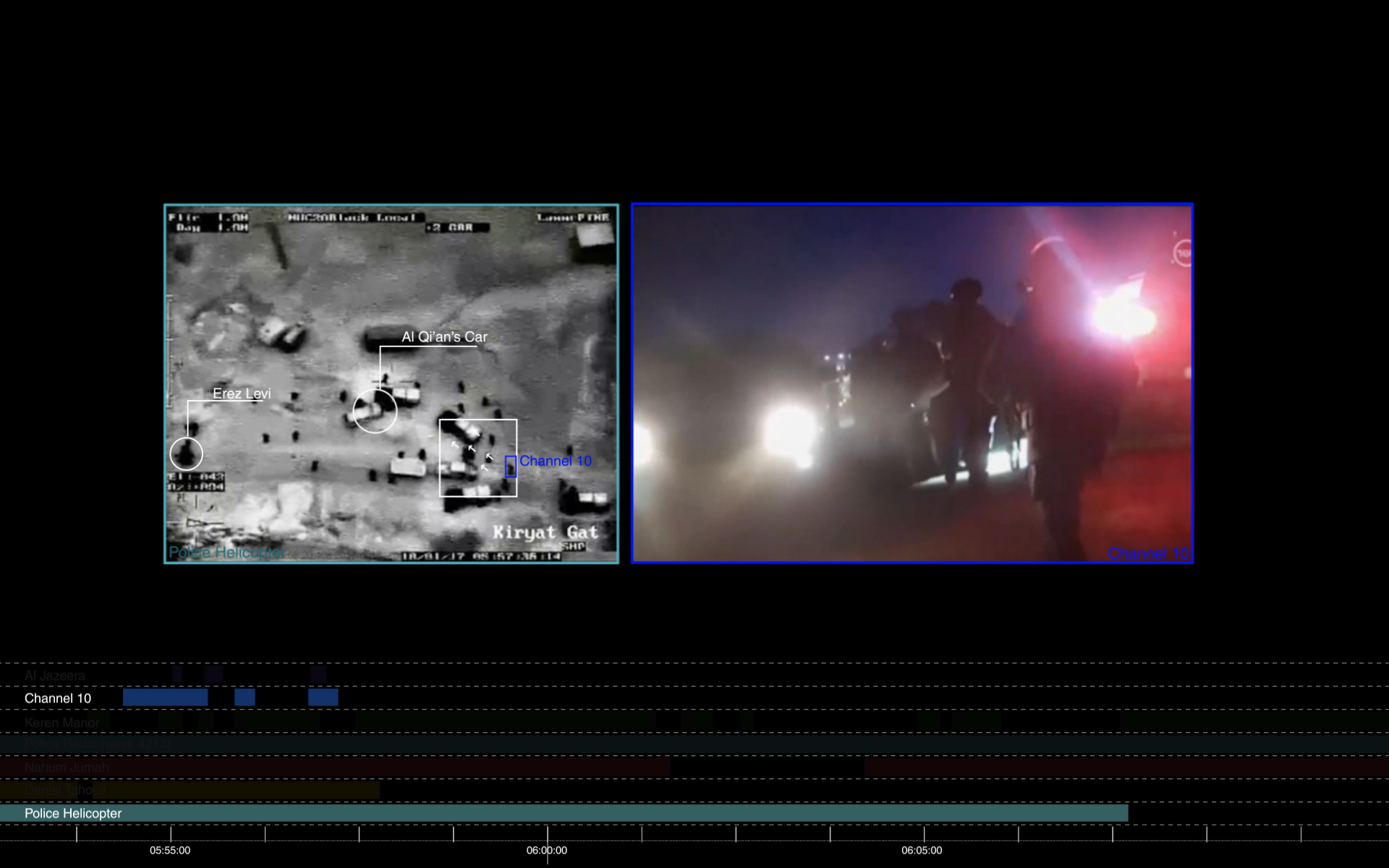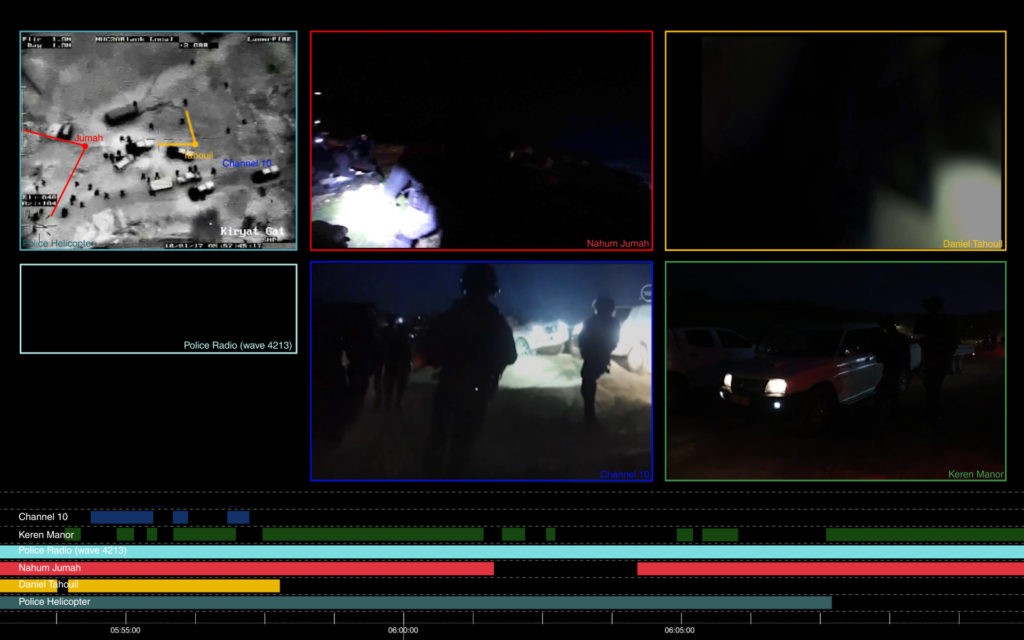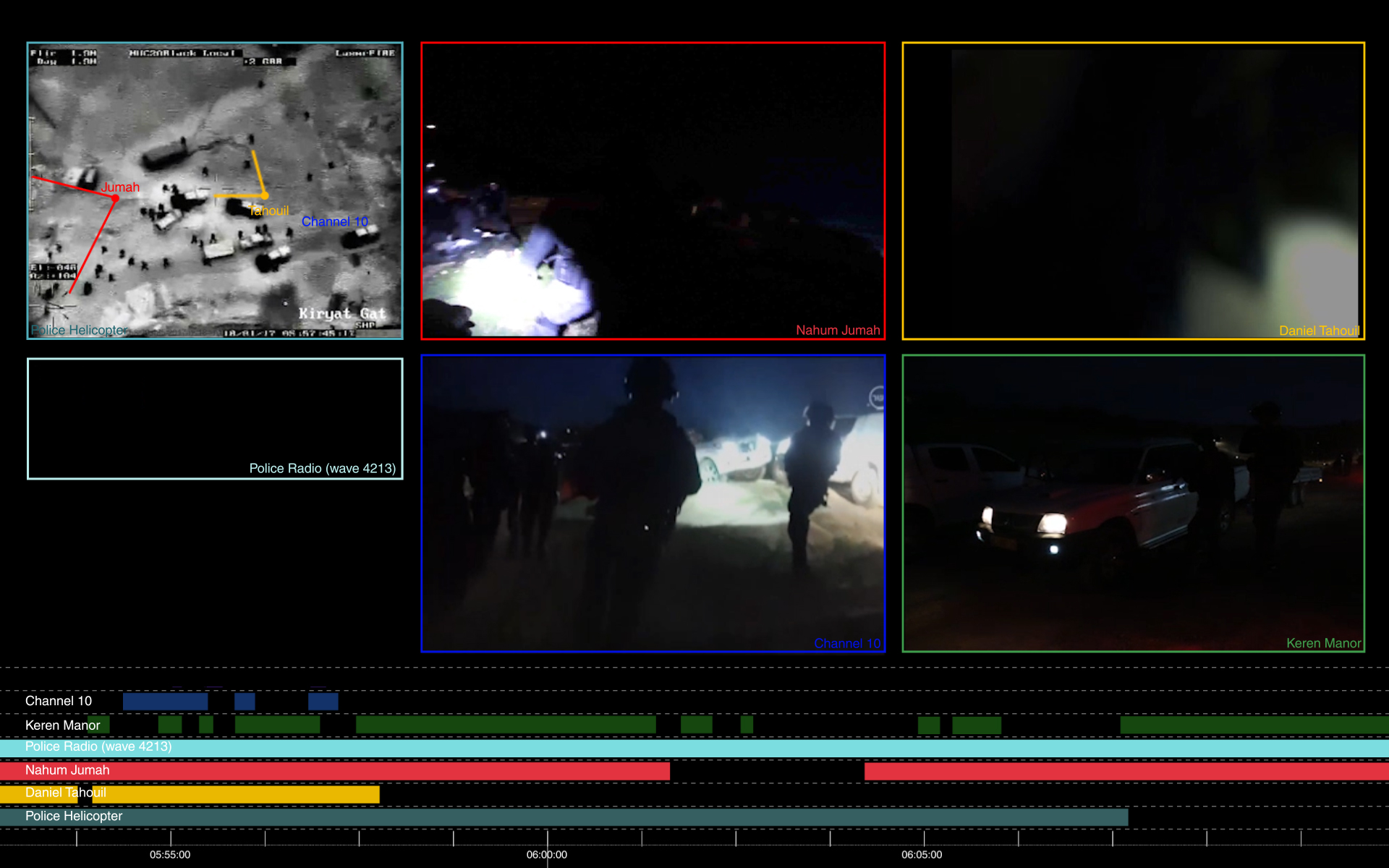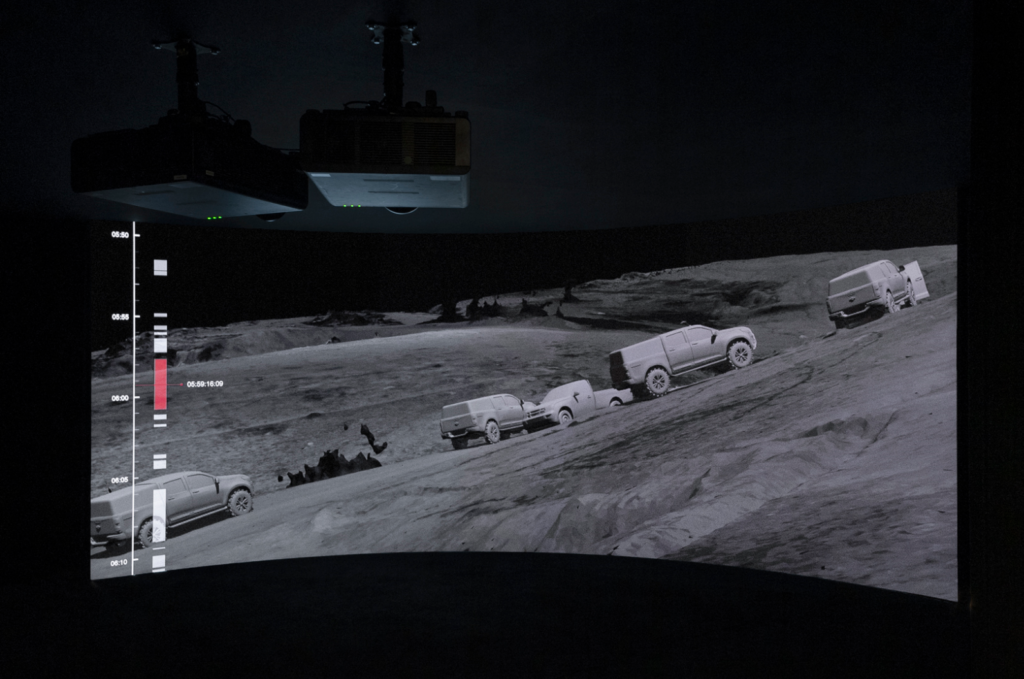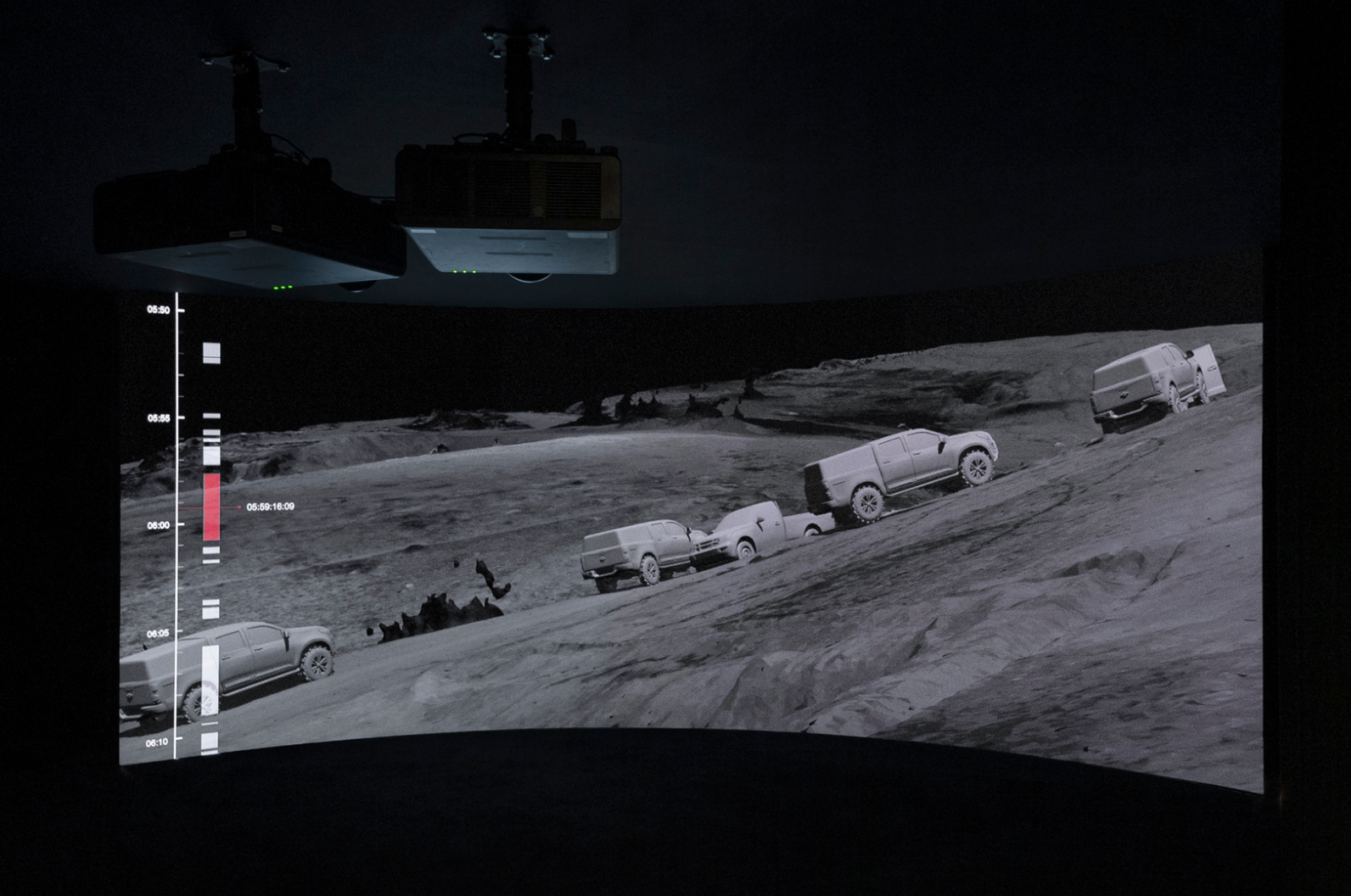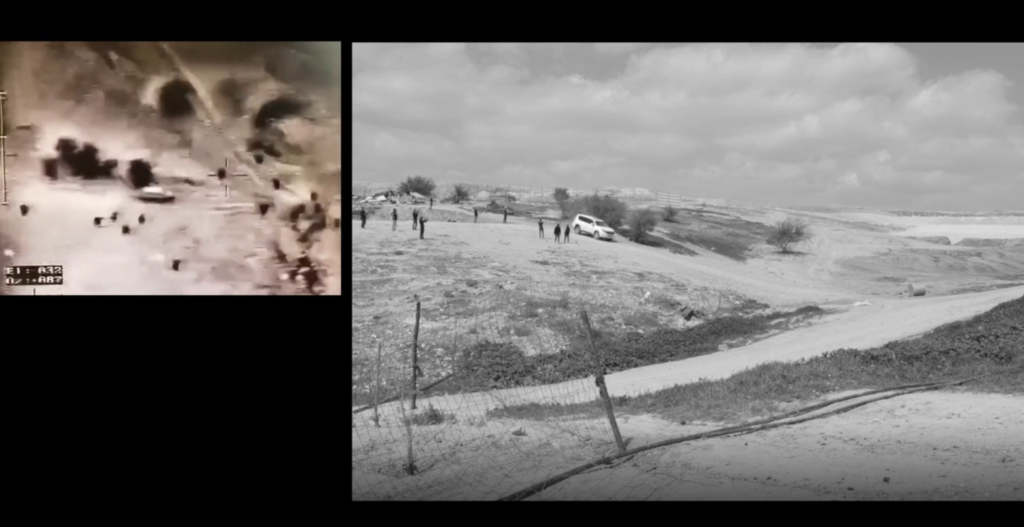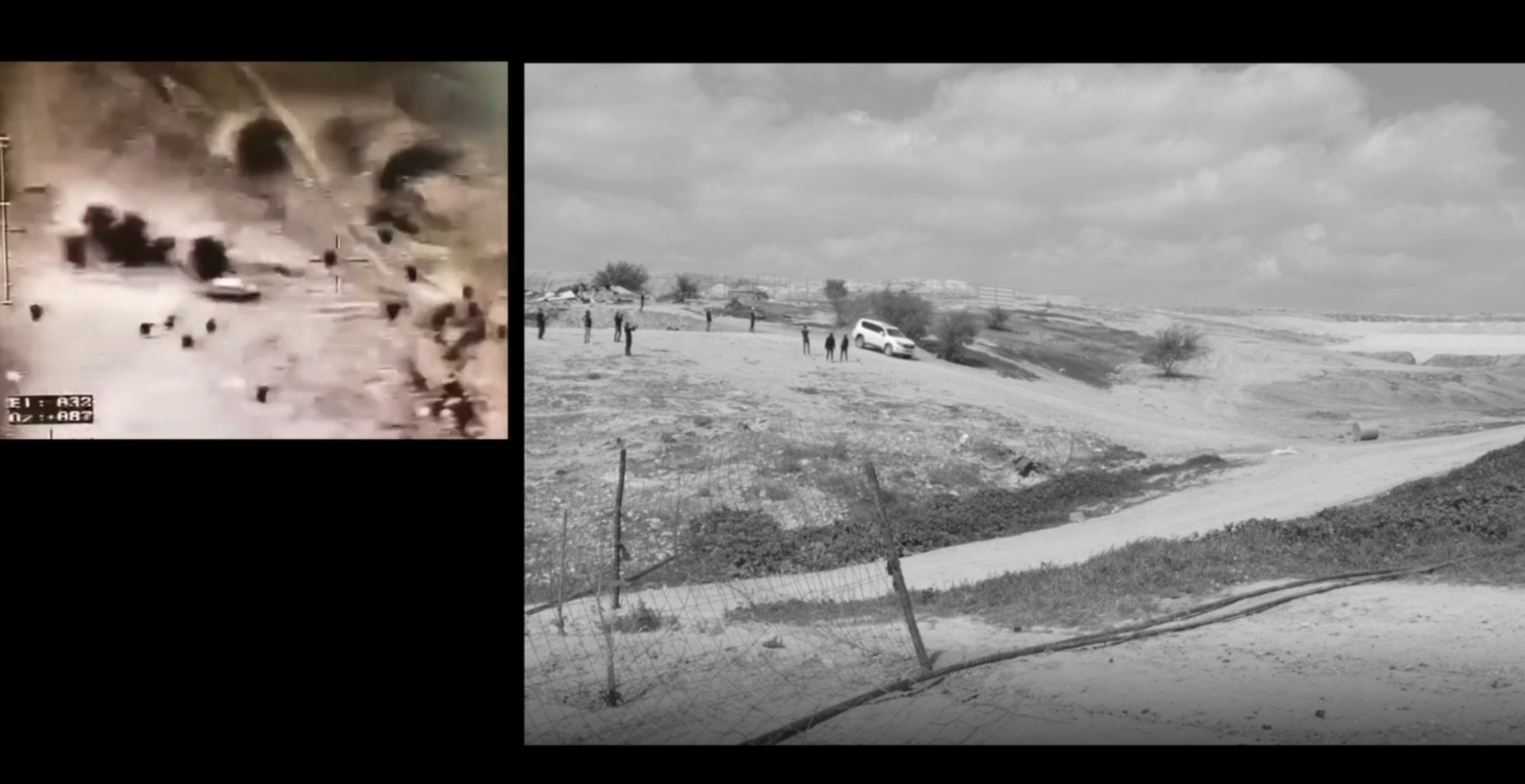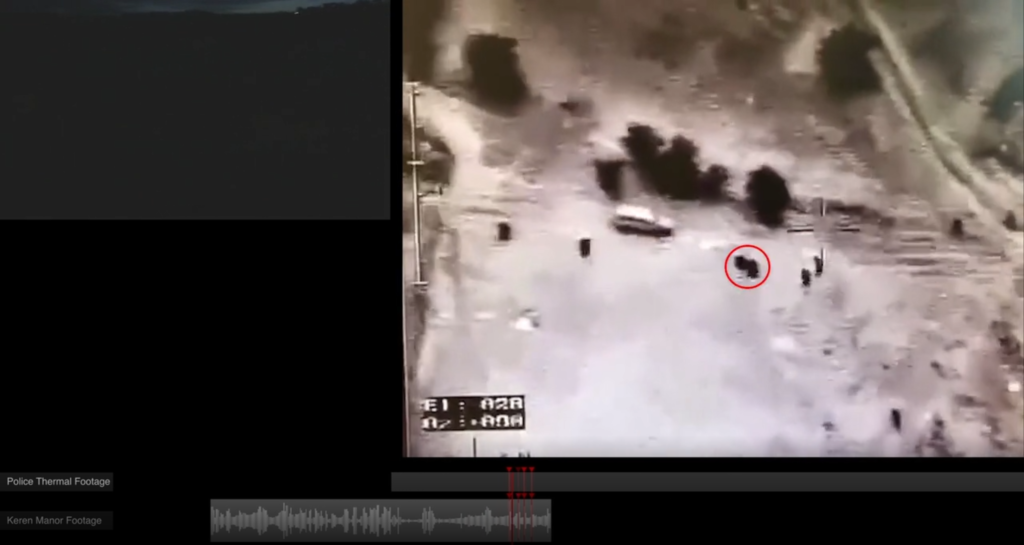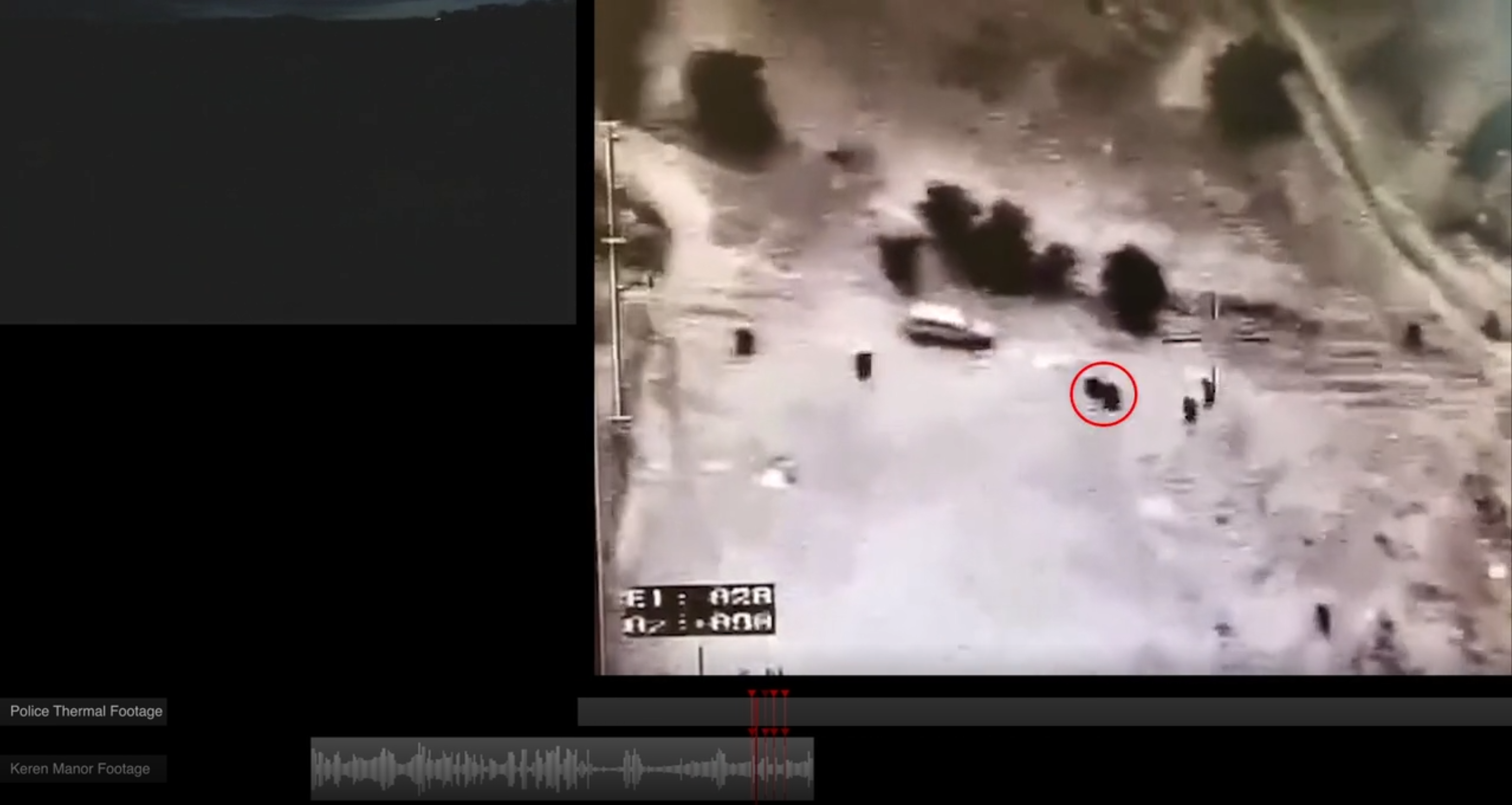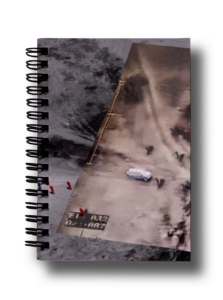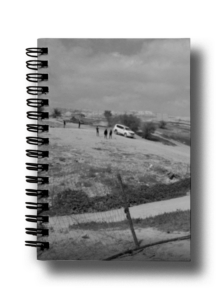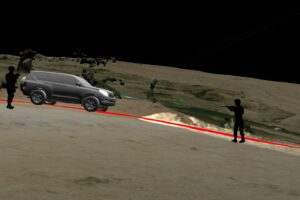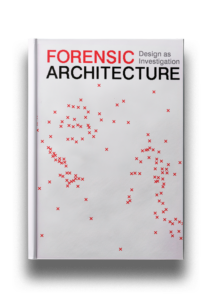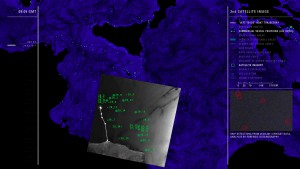About the project
Period
2017 - 2019
Location
Umm al-Hiran
External links
Proposed by
Reem Fadda
Before dawn on 18 Jan 2017, police raided the Bedouin village of Umm al-Hiran. Two people were killed: a villager, Yakub Musa Abu al-Qi’an, and policeman Erez Levi. Officials described the incident as a terror attack, and suggested that al-Qi’an had links to the terror group ISIS.
But residents and activists told a different story: police had fired at al-Qi’an without provocation. Forensic Architecture has worked from the day of the incident to pursue transparency and justice with and on behalf of those residents, and the family of al-Qi’an.
Since then, Forensic Architecture has reproduced and revisited that investigation multiple times, exposing glaring inconsistencies in the account of al-Qi’an’s death presented by leading Israeli figures, including Prime Minister Netanyahu.
Working with the documentary photographer Activestills, we analysed open source video material, including helicopter camera footage released by the Israel Police that was intended to cast al-Qi’an as a terrorist, in order to challenge the state’s claims. Later, we travelled to Umm al-Hiran to reenactment the event together with the village’s residents.
Despite being forced to retract their claims, politicians and police have long refused to pursue prosecution against al-Qi’an’s killers.
About the artist
Forensic Architecture is a research agency based at Goldsmiths, University of London. We conduct architectural & media research on behalf of communities affected by state violence, human rights NGOs, and environmental justice groups.
We have made decisive interventions in cases around the world, providing forms of evidence with which traditional forensic processes often cannot engage. Our work is presented in legal & political forums, major exhibitions, citizens’ tribunals & international media.
Contents
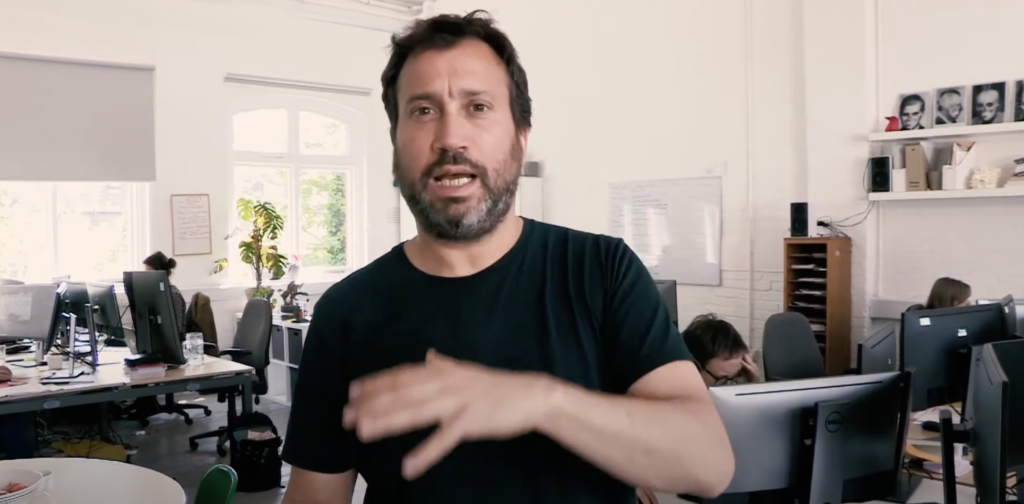 arrow_upward
arrow_upward
 arrow_upward
arrow_upward
 arrow_upward
arrow_upward
